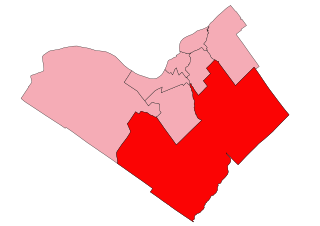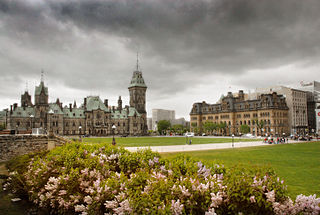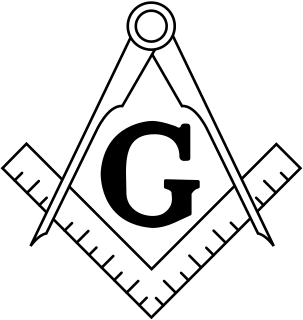The following list indicates ridings represented by Canadian Prime Ministers during their term(s) of office. Some Prime Ministers represented more than one constituency during their term(s), hence the tallied numbers exceed the number of Prime Ministers. Moreover, one Prime Minister - Sir Mackenzie Bowell - served his term while a member of the Senate, although he had previously been a member of the House of Commons from Ontario.

The Senate of Canada is the upper house of the Parliament of Canada, along with the House of Commons and the Monarch. The Senate is modelled after the British House of Lords and consists of 105 members appointed by the Governor General on the advice of the Prime Minister. Seats are assigned on a regional basis: four regions—defined as Ontario, Quebec, the Maritime provinces, and the Western provinces—each receive 24 seats, with the remaining portions of the country—Newfoundland and Labrador receiving 6 seats and the three northern territories each assigned the remaining one seat. Senators may serve until they reach the age of 75.

The House of Commons is a component of the Parliament of Canada, along with the Sovereign and the Senate. The House of Commons currently meets in a temporary Commons chamber in the West Block of the parliament buildings on Parliament Hill in Ottawa, while the Centre Block, which houses the traditional Commons chamber, undergoes a ten-year renovation.
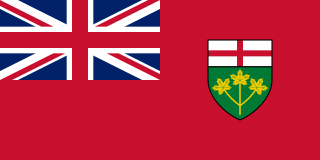
Ontario is one of the 13 provinces and territories of Canada and is located in east-central Canada. It is Canada's most populous province accounting for 38.3 percent of the country's population, and is the second-largest province in total area. Ontario is fourth-largest jurisdiction in total area when the territories of the Northwest Territories and Nunavut are included. It is home to the nation's capital city, Ottawa, and the nation's most populous city, Toronto, which is also Ontario's provincial capital.
Three provinces - New Brunswick, Newfoundland and Labrador, and Prince Edward Island - have not been represented by a sitting Prime Minister. Mackenzie King briefly represented the Prince Edward Island riding of Prince; and Jean Chrétien even more briefly represented the New Brunswick riding of Beauséjour prior to their assuming the premiership. None of the three territories have been represented by a person who served as Prime Minister.

New Brunswick is one of four Atlantic provinces on the east coast of Canada. According to the Constitution of Canada, New Brunswick is the only bilingual province. About two thirds of the population declare themselves anglophones and a third francophones. One third of the population describes themselves as bilingual. Atypically for Canada, only about half of the population lives in urban areas, mostly in Greater Moncton, Greater Saint John and the capital Fredericton.

Newfoundland and Labrador is the most easterly province of Canada. Situated in the country's Atlantic region, it comprises the island of Newfoundland and mainland Labrador to the northwest, with a combined area of 405,212 square kilometres (156,500 sq mi). In 2018, the province's population was estimated at 525,073. About 92% of the province's population lives on the island of Newfoundland, of whom more than half live on the Avalon Peninsula.
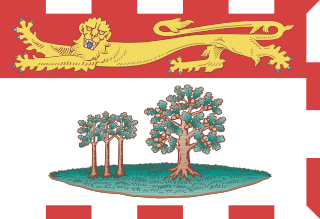
Prince Edward Island is a province of Canada consisting of the Atlantic island of the same name along with several much smaller islands nearby. PEI is one of the three Maritime Provinces. It is the smallest province of Canada in both land area and population, but it is the most densely populated. Part of the traditional lands of the Mi'kmaq, it became a British colony in the 1700s and was federated into Canada as a province in 1873. Its capital is Charlottetown. According to the 2016 census, the province of PEI has 142,907 residents.
Two ridings have been represented by two sitting Prime Ministers. Prince Albert was served by King and Diefenbaker; and Quebec East was represented by Laurier and St. Laurent. Calgary West was represented by Bennett during his term, and by Harper prior to his. Similarly, Macdonald served his fourth term as MP for Carleton, a riding represented by Borden as Opposition Leader in the 10th Parliament.

Prince Albert is a federal electoral district in Saskatchewan, Canada, that has been represented in the House of Commons of Canada from 1908 to 1988, and since 1997.
Quebec East was a federal electoral district in Quebec, Canada, that was represented in the House of Commons of Canada from 1867 to 2004.
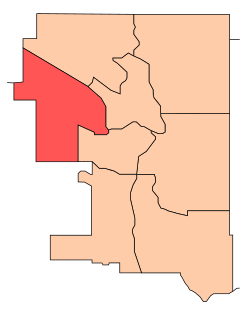
Calgary West was a federal electoral district in Alberta, Canada, that was represented in the House of Commons of Canada from 1917 to 1953, and from 1979 to 2015. It was located in the western part of the City of Calgary.
